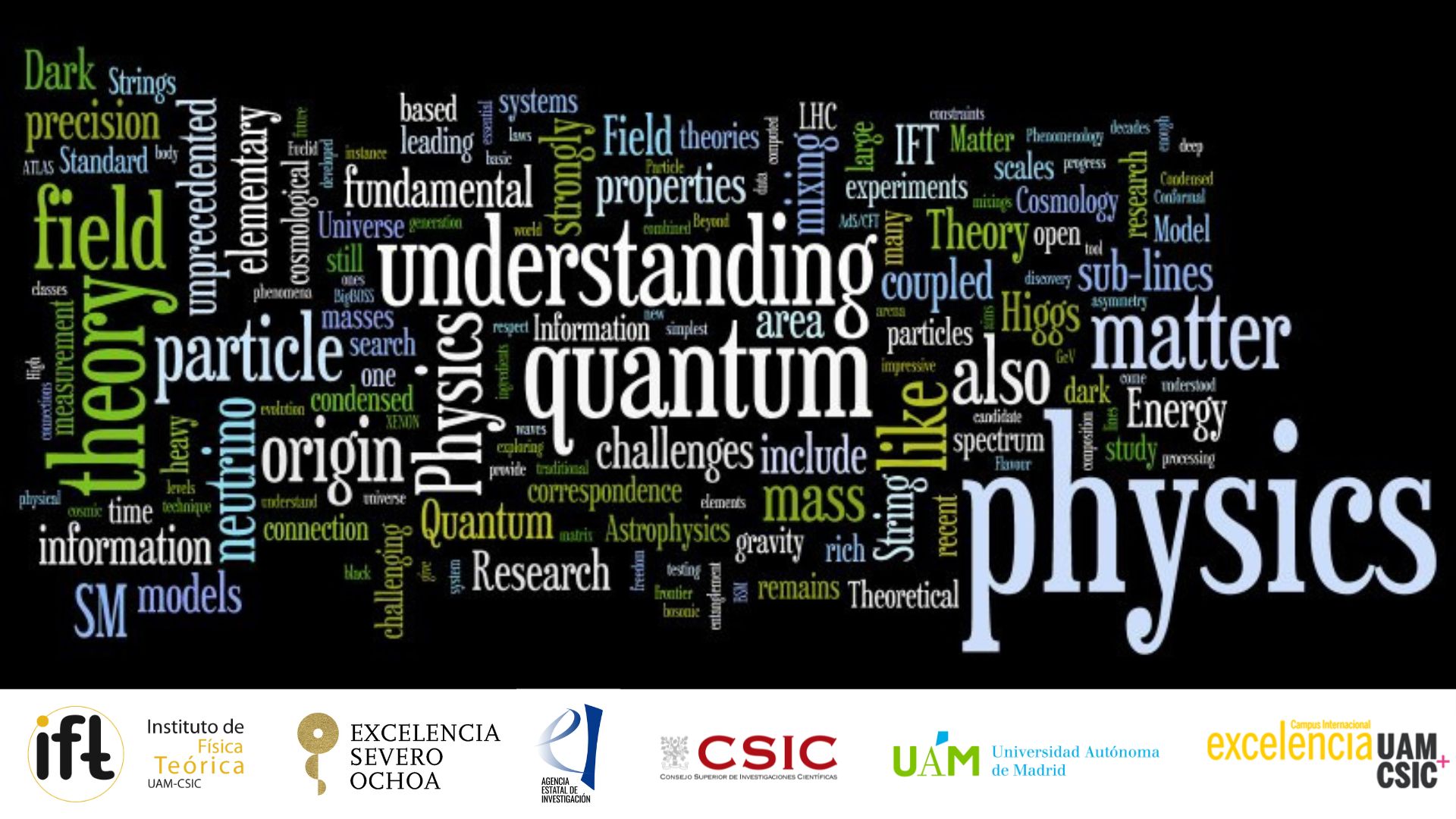Centro de Excelencia Severo Ochoa
Menu
Search

Blue Room
In this thesis we will take a look on the infrared (IR) and collinear limit of QED and pertur- bative gravity. First we study the infrared regime with its connection to the memory effect and to the decoherence of density matrices. Lastly, we study the consistency of QED with massless electrons.
First we investigate the memory effects in scattering processes which are described in terms of the asymptotic retarded fields. These fields are completely determined by the scat- tering data and the zero mode part is set by the soft photon theorem. The dressed asymptotic states defining an infrared finite S-matrix for charged particles can be defined as quantum coherent states using the corpuscular resolution of the asymptotic retarded fields. Imposing that the net radiated energy in the scattering is zero leads to the new set of conservation laws for the scattering S-matrix which are equivalent to the decoupling of the soft modes. The actual observability of the memory requires a non-vanishing radiated energy and could be described using the infrared part of the differential cross section that only depends on the scattering data and the radiated energy. This is the IR safe cross section with any number of emitted photons carrying total energy equal to the energy involved in the actual memory detection.
Secondly, we investigate on possible decoherence of the density matrix in QED or pertur- bative gravity due to entanglement with soft radiated modes and use thereby the two standard approaches to cancel infrared divergences coming from soft loop contributions. In the inclu- sive way only rates that include emitted soft radiation are non-vanishing. Independently of detector resolution, finite observables can only be obtained after integrating over the IR- component of this radiation. This integration can lead to some loss of quantum coherence. We argue that it should in general not lead to full decoherence. Based on unitarity, we sug- gest a way to define non-vanishing off-diagonal pieces of the IR-finite density matrix. For this IR-finite density matrix, we estimate the dependence of the loss of quantum coherence, i.e. of its purity, on the scattering kinematics. In the coherent state approach we dress the initial and final states with a cloud of infinite many photons to achieve a not fully decoherent density matrix. The inclusive way and the coherent state approach both yield the same IR- finite rates, but we point out that they are not equivalent since they encode different infrared scales. In particular, dressing states are independent of the resolution scale of radiation. Instead, they define radiative vacua in the von Neumann space. We present a combined for- malism that can simultaneously describe both dressing and radiation. This unified approach allows us to tackle the problem of quantum decoherence due to tracing over unresolved radi- ation. We again obtain an IR-finite density matrix with non-vanishing off-diagonal elements and again estimate how its purity depends on scattering kinematics and the resolution scale. Along the way, we comment on collinear divergences as well as the connection of large gauge transformations and dressing.
Lastly, we work out in the forward limit and up to order e6 in perturbation theory the collinear divergences. In this kinematical regime we discover new collinear divergences that we argue can be only cancelled using quantum interference with processes contributing to the gauge anomaly. This rules out the possibility of a quantum consistent and anomaly free theory with massless charges and long range interactions. We use the anomalous thresh- old singularities to derive a gravitational lower bound on the mass of the lightest charged fermion.
Social media